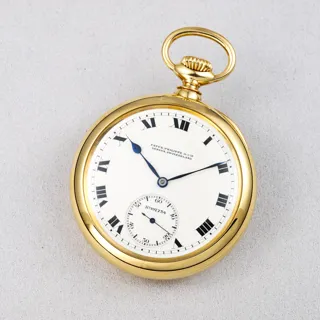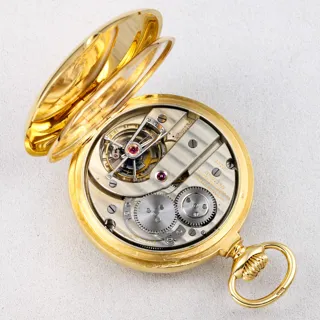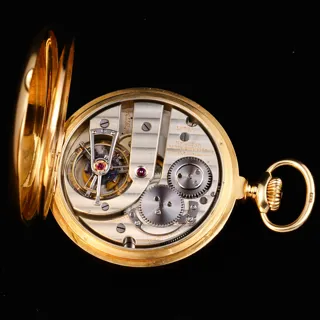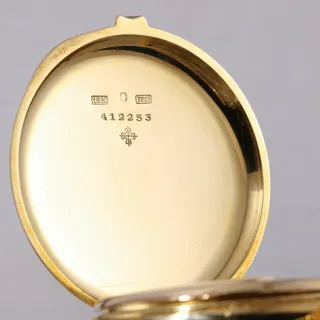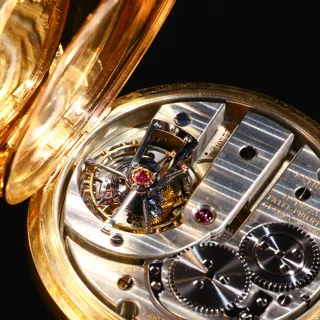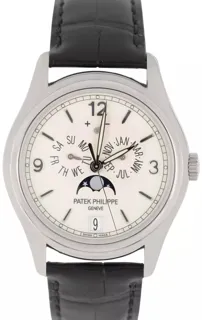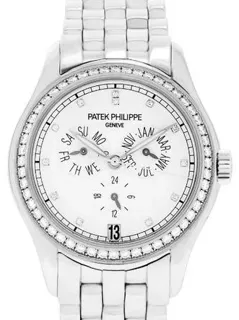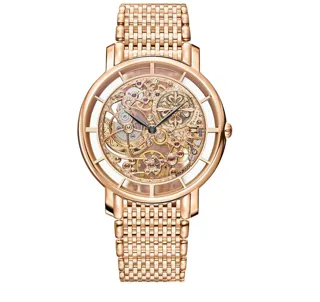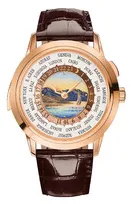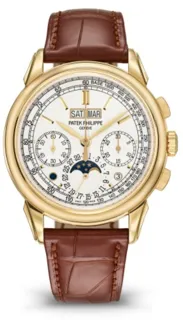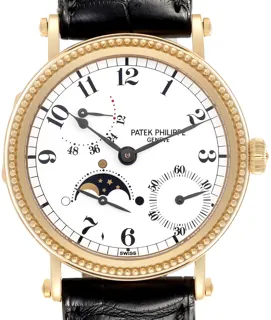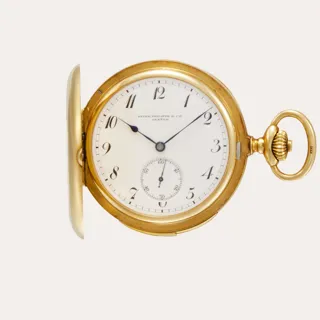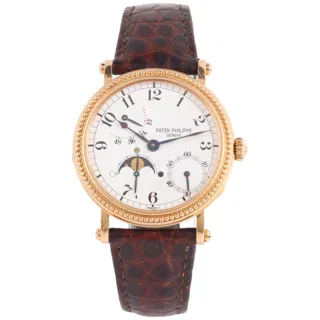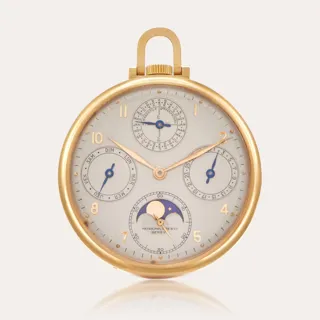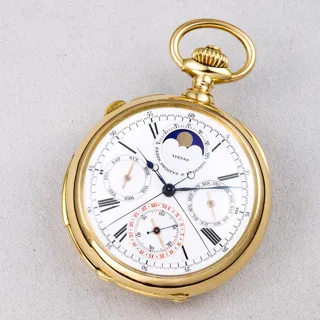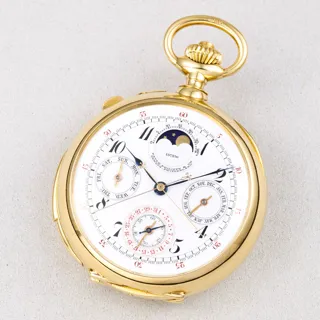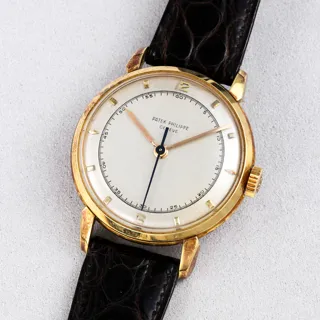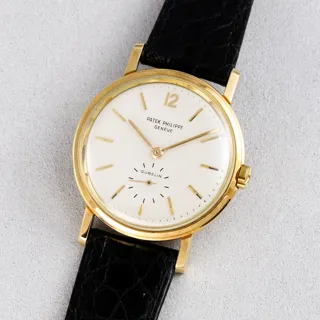Brand Patek Philippe, Geneva
Model ‘Tourbillon’
Retailed by / made for Bulletin de marche from the Geneva Astronomical Observatory (1926)
Year circa 1922
Reference -
Movement No. 197 734
Calibre 22’’’, manual-winding, 18 jewels
Case No. 412 253
Material/s yellow gold (18-carat)
Bracelet -
Buckle -
Dimensions Ø 52.9 mm. Thickness 15.5 mm.
Weight 139.3 gr. (approx.)
Signature dial, case and movement
Accessories Extract from the Archives; copy of the Bulletin de marche -- Patek Philippe Pocket chronometer with Observatory Bulletin, one-minute tourbillon regulator, lever escapement, amber ‘egg-shell’ enamel dial; yellow gold (18-carat) -- Tourbillon Chronometer Awarded a First Class Bulletin, with a First Prize -- Yellow gold (18-carat), open-face, keyless-winding, round-shaped, large, heavy and impressive pocket chronometer, with subsidiary seconds at 6 o’clock, and a one-minute tourbillon regulator. -- Case: No. 197 734, four-piece, ‘Bassine à gouttes’, polished, invisible hinges; gold and glass cuvette (dome) allowing to see the movement; oval-shaped clipped bow. Dial: amber colour, enamel (two-piece), ‘egg-shell’, with black painted radiating Roman numerals; external minute track divided five by five, with black painted radiating lines; blued steel ‘Poire’ pear-shaped hands. Movement: No. 412 253, calibre 19’’’, manual-winding, 18 jewels, ‘Extra’ quality, Pellaton-type (so-called ‘Le Locle Technicum calibre’), rhodium-plated, curved centre bridge, going barrel, three-arm equidistant Pellaton carriage with equilibrated lateral lever escapement, cut bimetallic compensated Guillaume balance with gold poising screws, blued steel hairspring with Phillips terminal curve and amplitude control device, gold screwed-chaton end-stone, polished steel index-regulator with gold scale plate (18 000 vibrations per hour), eight adjustments, adjusted by the precision timer ‘régleur’ Jules Golay-Audemars, Geneva. Type of winding and time setting: winding and time-setting by the crown on the pendant. -- Observatory At the timing contest organised in 1926 at the Astronomical Observatory of Geneva, this chronometer was awarded a First Class Bulletin, with a First Prize mention. It was ranked 2nd out of 40, with 802 points on a possible total of 1 000. The first obtained 827 points and the last classified 619 points. Its number of deposit was 177 (January 15 to March 03, 1927). Abstract of the timing contest
· Mean average daily rate +/- 0.20
· Mean average corresponding to a change of position +/- 0.13
· Error of compensation (per 1° centigrade) +/- 0.028
· Restart period + 0.06

